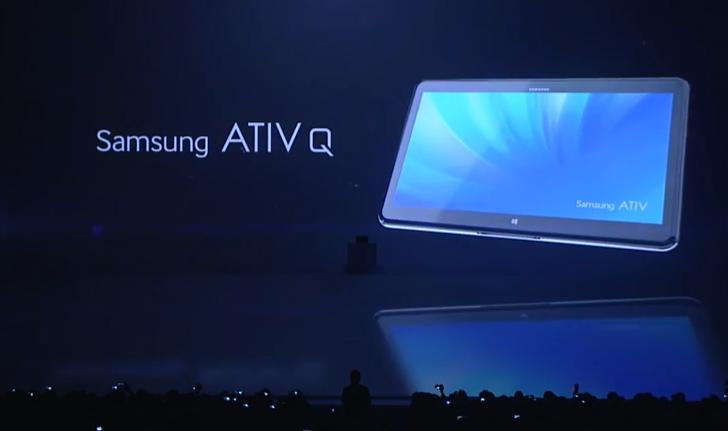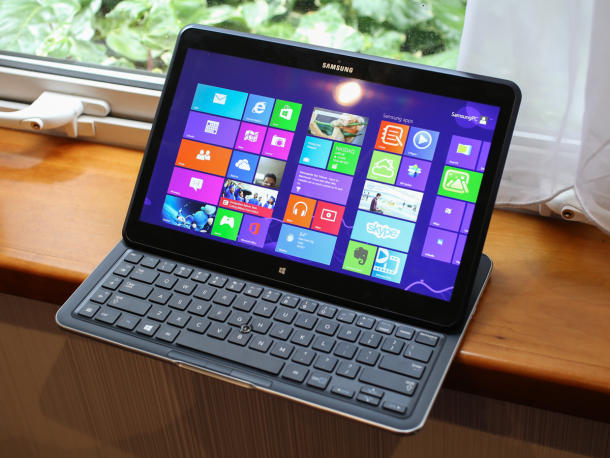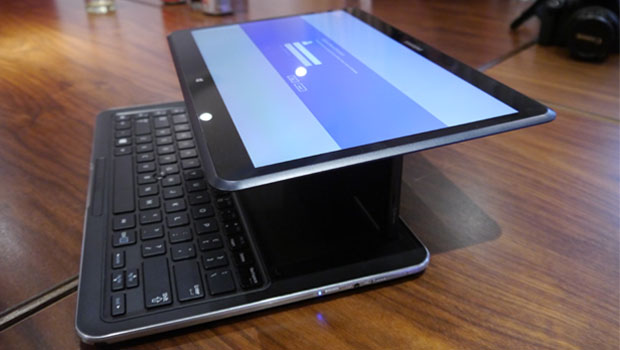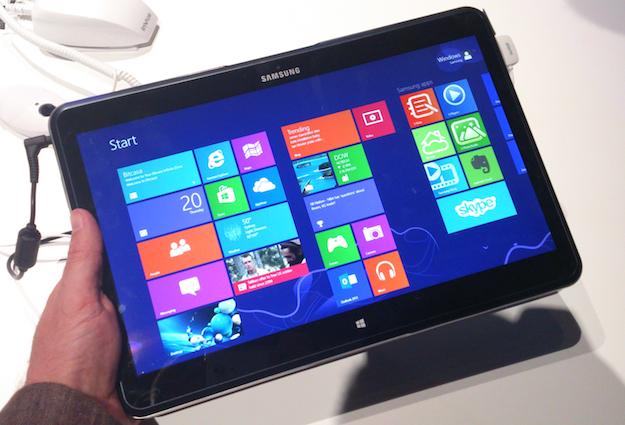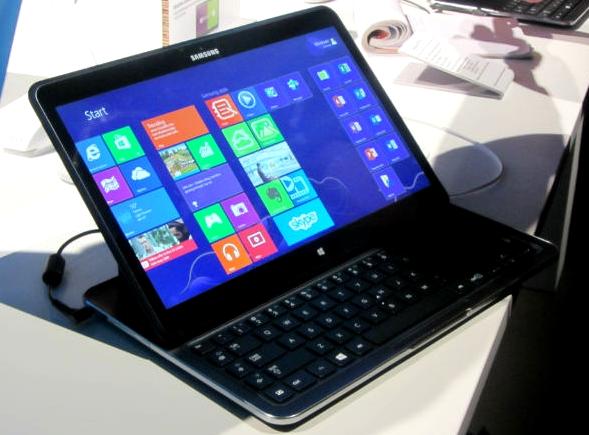Samsung ATIV Q Review
Intoduction
Samsung again has managed to attract a lot of attention when the company announced the ATIV Q. The device has some really stunning new features like the screen resolution which require an open-mindedness to truly appreciate them. It runs on dual OS with both Windows 8 and Android on 13.3” display powered by Intel’s Haswell chip and all this is packed in crazy hybrid between tablet, notebook and ultrabook.
Design
When compared to a laptop or an ultrabook due to the powerful Intel chip that it runs on, it is really thin – only 14mm and relatively light at 1.3kg (2.8 pounds). But if you compare it to a typical 10 inch tablet it’s a bit on the heavy side. Its dimensions are 12.87 x 8.57 x 0.55 inches (327.0 x 217.8 x 13.9 mm) but probably the most important piece of the design that we should pay attention to is the hinge mechanism and its durability and uses. It can take up a few different positions. As a regular notebook with the screen standing and the thin keyboard right in front of the screen in a Z-letter shape and as a stand with the screen turned opposite the keyboard. Its flexibility is one of the things that even the biggest critics of the Samsung ATIV Q can’t deny.
Display
3200×1800 pixels – that’s the screen resolution along with the 13.3” screen it achieves a record high density of 275ppi. In order for you to make a comparison the Retina display of the 13” MacBook Pro has only 220ppi. There is no doubt here that Samsung has managed to outrun Apple on this one and it will stay in the lead at least for a while. Especially, if you consider the other properties ot the ATIV Q
Software
Samsung has come up with a solution to the problem with the number of apps at the Windows Store. The Dual OS feature is being introduced with the ATIV Q and it allows the user to switch between Android 4.2.2 to Windows 8 at any point he/she desires. At this point we should also mark that when you are on the Android OS the tablet/ultrabook runs at the default Full HD but when you run Windows OS you have the option to choose maximum resolution and it jumps to 3200×1800. There is a special tool that helps you incorporate all the files like documents, music and video, which are shared by both systems.
There are also two new features that need to be addressed the SideSync mode of Samsung and the automatic DPI scaling which is finally included in the Windows 8.1. SideSync makes the communication between your Galaxy handset and your computer way easier. It provides drag and drop option between the phone and the computer. It allows sharing the keyboard and the mouse and even you can incorporate the screen of your handset on the larger display. What is more, all the problems that could potentially arise from the size of the display working with Windows 8 are solved by the automatic DPI scaling which allows an increase to maximum percentage and various scaling on monitors.
Hardware
There is no doubt that everything will be running smoothly on processor with 1.6GHz dual-core i5 and if we judge by the benchmark score that it has on AnTuTu of 54 861 the Intel HD graphics 4400 are also running properly. The Turbo mode, though seems a little restricted which maybe so in order to save some battery life in exchange for peak power. Under the hood of the ATIV Q there are also 4GB DDR3L RAM and 256GB internal storage SSD. The tablet/ultrabook also supports memory card slot so you can add even more memory.
The amount of RAM for each OS and the way it is shared can be controlled through a slider that is available with the Configuration tool in settings. The default settings are 1.5GB for Android and 2.5GB for Windows and Android also has its internal storage of 16 GB for apps and so on.
When it comes to connectivity Bluetooth, Wi-Fi, DLNA, 1xUSB 2.0 and 1xUSB 3.0 and of course one mini-HDMI port are all supported.
According to Samsung battery life is improved and the ATIV Q should run for up to 9 hours in low usage and low brightness and with high usage at 60% brightness up to 7-7,5 hours which all by itself finally makes a Windows-laden portable competitive to Android and iOS tablets.
Video Playback and media
The media as you can suppose is well incorporated in both Windows and Android and you can watch or listen to anything on any player you’d like and because the display is so amazing the video watching is where the ATIV Q really makes the difference
Video Playback is very important to the people who like to watch a lot of movies or TV series on their computer and the unique resolution and the awesome brightness and sharpness really do impress. Not only that but through the use of the hinge mechanism you can choose the best position to watch anything that you desire.
Conclusion
All in all there are only a few devices in the same price range that can actually compete with the Samsung ATIV Q like the Sony Vaio Duo 13 and Lenovo IdeaPad Yoga 13 (which is cheaper and flips 360 degrees) but both don’t have what Samsung has managed to pack into a one unique computer/tablet. Only the price differences may at this point be in some significance to the competion in this kind of hybrid devices.

